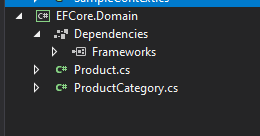The more we learn the more we realize how much we don't know - Albert Einstein
Principles:
Metalearning
- Understanding how to learn, observing seniors or leads to see how they learn, and adopting their techniques.
- Setting up the best conditions to learn, being adaptable, and being willing to adjust your learning process.
- Creating a plan for learning.
Focus
- The ability to sustain interest and persistent attention.
- Training to control your focus, using the Pomodoro technique, and attention management.
- Limiting yourself from distractions to enable deep work.
- Practicing deliberately and pushing your limits.
Directness
- Learning by doing.
- Achieving immersion or getting your hands dirty.
- Applying knowledge directly; avoid getting lost in theory, practice what you learn.
- Providing someone with a feature, but be careful not to provide something so overwhelming as to decrease the chance of demoralization.
Drill
- Engage in focused practice by working on specific parts of the subject matter.
- Explore different scenarios within a particular area of the subject to deepen understanding.
- Emphasize repetition to solidify skills and knowledge.
Retrieval
- Attempt to recall information mentally before resorting to looking it up; self-test to gauge learning.
- Encourage independent problem-solving by not providing all the answers upfront.
- Utilize simulations to apply knowledge in practical settings.
- Implement spaced repetition to enhance long-term memory retention.
Feedback
- Seek out individuals who can provide accurate and constructive feedback.
- Participate in code reviews and catalytic coaching for professional development.
- Remember that feedback can come from various sources, including AI or code analyzers, not just people.
Retention
- Employ mnemonic devices, visualizations, and associations to memorize patterns and concepts.
- Conduct regular reviews to reinforce learning and prevent forgetting.
- Recognize the importance of recovery, such as getting adequate sleep, for memory consolidation.
Intuition
- Cultivate intuition by consistently writing or documenting key learnings.
- Enhance understanding by teaching the subject matter to others through brownbag sessions or demonstrations.
- Recognize that intuition grows with experience; it enables seasoned professionals to envision a broader range of solutions to problems compared to novices.
- Develop intuition through experience and pattern recognition, which allows for quicker and more effective problem-solving.
Experimentation
- Integrate all ultralearning principles to synthesize knowledge and combine skills for a comprehensive learning experience.
- Apply what you’ve learned by undertaking projects, which serve as practical tests of your new skills.
- Embrace an iterative process: refine your approach, learn from mistakes, and iterate to achieve mastery.
Fostering an Ultralearning environment
Create an inspiring goal
- Establish a compelling goal to ignite motivation, sustain persistence, and provide clear direction.
- Goals should be well-defined, specific, measurable, and time-bound to ensure they are actionable and trackable.
Be careful with competition
- Embrace positive competition as it motivates us to excel and elevate our standards.
- Be cautious of negative competition, which can induce stress, anxiety, and burnout, potentially shifting focus from learning to merely outperforming others.
- Prioritize areas where competition fosters personal growth and encourages collaboration.
Learning is the priority
- Recognize that prioritizing learning leads to increased efficiency as we refine our methods over time.
- Dedicate time specifically for learning and ensure it is used effectively with focused attention.
- Learning enhances our ability to adapt swiftly, embrace new methodologies, and revise strategies as needed.
- Implement time blocking, engage in regular reflection, and remain adaptable to maintain a productive learning environment.
https://www.scotthyoung.com/
https://www.scotthyoung.com/blog/ultralearning/













